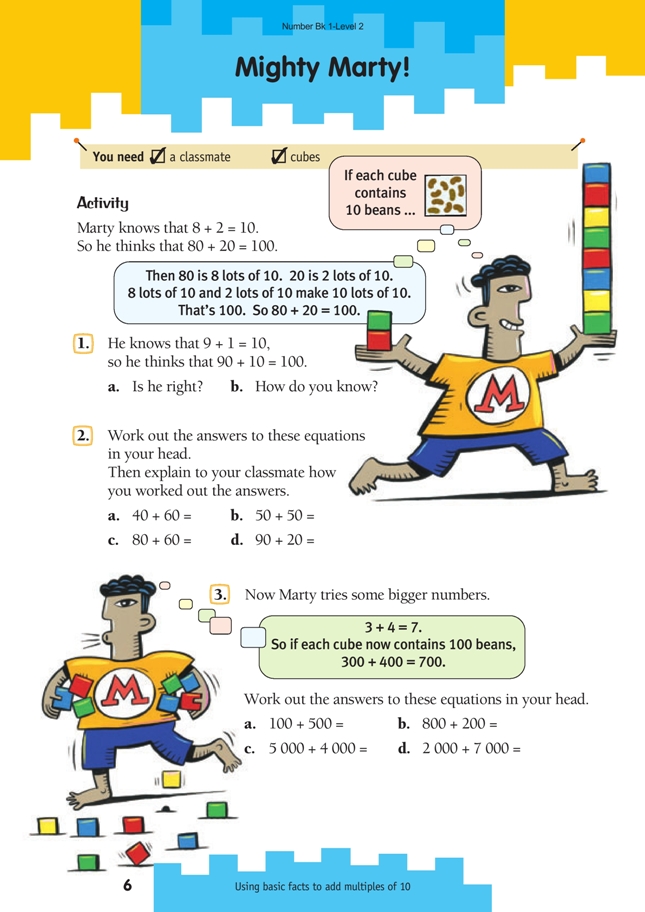This is a level 2 number activity from the Figure It Out series. It relates to Stage 5 of the Number Framework.
A PDF of the student activity is included.
Click on the image to enlarge it. Click again to close. Download PDF (190 KB)
use basic facts to add multiples of 10
cubes
classmate
In this activity, the students use their basic facts knowledge to solve problems involving basic facts multiplied by 10, 100, or 1 000. The students will feel empowered when they realise that their knowledge of addition basic facts can help them to solve problems with much larger numbers.
You may want to demonstrate Marty’s working, using materials such as ice-block sticks bundled in tens, multilink cubes joined in stacks of 10, or film canisters containing 10 beans.
Encourage the students to explain their strategies, both verbally and in written form. For example, for question 1:
“I know … because 9 + 1 = 10 and 90 is 9 lots of 10, and 10 is 1 lot of 10,
so … 9 lots of 10 and 1 lot of 10 make 10 lots of 10, which are 100. 9 + 1 = 10, and 90 + 10 = 100.
That means if I have 9 and I want 90, it’s 10 lots bigger or 10 times bigger.
So 90 is a multiple of 10.”
As an extension, you could present the students with problems where they can use their knowledge of groupings within 20. For example, if they know that 12 + 5 = 17, can they use that knowledge to solve 120 + 50? Or, if 11 + 9 = 20, can they work out 110 + 90?
The problems in this activity are set in a number context. As a follow-up activity, the students could write their own story problems for some of the number sentences used in questions 2 and 3.
Answers to Activity
1. a. Yes.
b. 90 is 9 lots of 10. 10 is 1 lot of 10. 9 lots of 10 and 1 lot of 10 make 10 lots of
10, which are 100. 9 + 1 = 10, so 90 + 10 = 100.
2. a. 40 + 60 =100
b. 50 + 50 = 100
c. 80 + 60 =140
d. 90 + 20 = 110
Explanations will vary.
3 .. a100 + 500 = 600
b. 800 + 200 = 1 000
c. 5 000 + 4 000 = 9 000
d. 2 000 + 7 000 = 9 000
